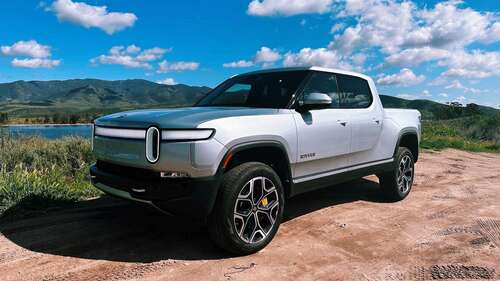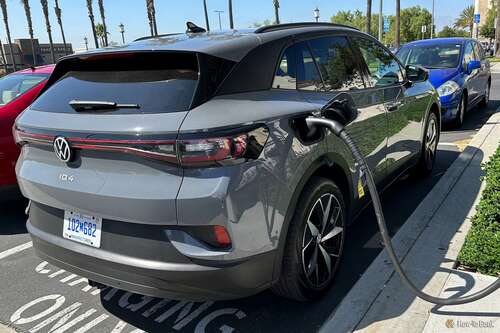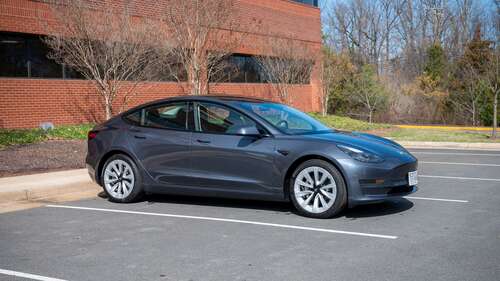Cars and all their parts, terms, or repair jargon can be confusing, even if you’re mechanically inclined. As electric vehicles continue to gain popularity, we now have a world full of entirely new sayings, acronyms, and more that you’ll want to know and understand.
Sure, cars come with an owner’s manual, but if you’re looking for a quick definition for some common terms, an EV glossary, we have you covered. I’m not talking about horsepower, torque, or even watts, as those are all pretty standard. Instead, read on to find out what classifies a vehicle as a PHEV, what EVSP or MPGe means, and what the heck a CHAdeMO is.
Common EV Terms
For starters, here are multiple standard EV terms of classifications you’ll see or hear more frequently, like when you’re shopping for a new vehicle at a dealership. These may help you decide between an EV and a hybrid and know the difference between certain features, or choose to explore other options. Then, we’ll dig into charging and other acronyms a bit later.
- EV (Electric vehicle): A generic term that includes all vehicles powered by electric motors or electricity.
- ICE (Internal combustion engine): A vehicle powered by a conventional oil engine that runs on gasoline or diesel fuel, etc.
- HEV (Hybrid): A dual-system vehicle that uses an electric platform and an ICE for improved range or performance that recharges itself.
- PHEV (Plug-in hybrid electric vehicle): A model similar to a hybrid that utilizes a bigger battery and electric system while being able to plug into a charger. PHEVs typically can run in an EV-only mode and offer more range than conventional hybrids.
- FCEV (Fuel cell electric vehicle): Ditches fossil fuels to run on hydrogen to charge the vehicle’s battery.
- MHEV (Mild hybrid electric vehicle): Also known as a BAHV (battery-assisted hybrid vehicle) is your typical ICE vehicle with a small electric motor or system to improve start/stop performance and increase torque, but it can’t run on the battery alone.
- Regenerative braking: A system on EVs in which energy from using the brakes (or running the electric motors in reverse to slow down) gets captured and stored to charge the battery.
- ZEV (Zero-emission vehicle): A term to describe automobiles that emit no pollutants or emissions.
- Frunk (front trunk): Without a gasoline engine up front, many EVs come with a front trunk, aka a frunk.
- MPGe (Miles Per Gallon Equivalent): A measurement of how far an EV can travel on battery compared to one gallon of gasoline. For example, 1 MPGe = 1 mi / 33.7 kWh battery. This helps consumers compare efficiency. Many Tesla models get upwards of 130 MPGe.
Electric Vehicle Charging Terms
When it comes to charging, things can quickly get very confusing. That’s because there are level 1, 2 , and 3 chargers; DC fast-charging; multiple charging port types for different brands or countries; and more.
- SAE J1772 (J-plug): Also known as a Type 1 connector, which is a North American EV charging plug standard for level 1 or level 2 charging speeds. You’d typically use it with a level 2 home charger or in public on many Non-Tesla EVs.
- CCS (Combined charging system): A combination connector that charges up to 350kW. It includes both a regular type 1 J-plug above a set of faster DC charging pins and is popular throughout the US and Europe. There are CCS Combo 1 or Combo 2 plugs everywhere.
- NACS (North American Charging Standard): This is also known as the Tesla charging standard (or a Tesla plug) and is currently being standardized as SAE J3400 for use with almost any EV made in North America. Essentially, other automakers are adopting Tesla’s plug, and it’s turning into a universal standard type.
- CHAdeMO: A charging port and cable that offers rapid DC fast charging throughout Asia. It’s similar to a Type 2 plug but doesn’t use the same connectors as a CCS combo. It’s also known as “JEVS G105-1993”.
- ChaoJi: A new ultra-fast charging connector that will deliver up to 900kW. It aims to replace CHAdeMO and China’s GB/T plug while offering backward compatibility.
- Mennekes: A popular Type 2 charging port in Europe that charges up to 250kW.
- Bidirectional charging: The ability to export electricity from a vehicle’s battery pack via 120-volt or 240-volt outlets and share that power with a home, another car, tools, lights, and more. Also known as power-out, V2H (vehicle to home), V2C (vehicle to car), V2L (vehicle to load), or V2G (vehicle to grid). This is how EVs can power homes in an emergency.
- OBC (On-board charger): Convert alternating current to direct current to charge an EV’s batteries. Fast-charging stations don’t need to use an EV’s OBC since they are already direct current.
- Battery Cell: A basic term to describe the lithium-ion battery cell or unit.
- Battery Module: A grouping of battery cells within a bigger pack. This helps with overall electrical arrangements, weight distribution, design, and more.
- Battery Pack: The final shape and structure of an EV battery system, including cells, modules, management systems, cooling, and more.
- wBMS (Wireless battery management system): A wireless system that balances chemistry within the individual battery cell groups for optimal performance, performs battery health tests/checks, and overall battery management.
- kW (Kilowatts): The basic measurement of an EV’s power that is generated by its batteries. 1Kw= 1,000 watts.
- kWh (Kilowatt hours): A measurement of an EV’s energy and how many kW it can supply overall or in hours.
Other EV Terms and Acronyms
While many of these terms and acronyms are the most common for buying or charging EVs, many others exist. There are countless different systems, control modules, cooling and heating pipes, and more, which combined deliver the experience we know today as electric vehicles. Many of these differ from traditional ICE vehicles. Here are a few others you could come across.
- EVSE (Electric vehicle supply equipment): Infrastructure and equipment (from cables, connectors, and charging locations) designed to supply power to EVs safely.
- EVSP (Electric vehicle service provider): Providers manage and maintain the entire service aspect of EVs. This includes the charging locations, backend software, communication channels, and everything else a provider would handle.
- Reducer: Similar to a transmission in an ICE vehicle, this converts all the power and torque from an EV electric motor to increase performance.
- WLTP (Worldwide harmonized light vehicles test procedure): An up-to-date global standard for determining the levels of pollutants, emissions, and fuel consumption of traditional and hybrid or fully electric vehicles in the real world.
- BMS (Battery management system): Similar to the eBMS, this system manages input/output, temperatures, and overall health of your EV battery.
- BHS (Battery heating system): Maintains safe operating temperatures of the battery during cold weather.
- OBD2 (Onboard diagnostics 2): OBD refers to a vehicle’s ability to self-diagnose and report issues. Built-in sensors can trigger alerts like a check engine light (CEL) and help find other problems. OBD1 was replaced by OBD2 years ago and is the primary way to log and access vehicle data, retrieve real-time diagnostics, and track other systems on regular ICE vehicles, EVs, and more.
Now that you know some of the most common EV terms or acronyms and maybe a few others, you’ll be better informed when you head into a dealership to get a new vehicle. Feel more confident talking with other owners, looking for specific specs and features, or handling your shiny new car.




